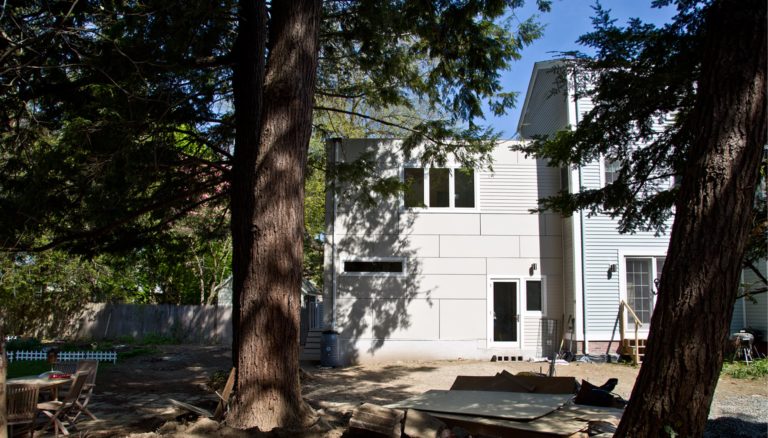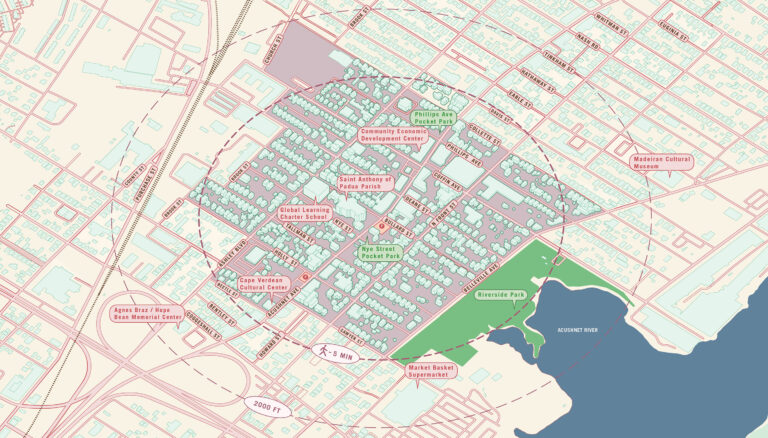Penumbra Installation
SCOTTSDALE MUSEUM OF CONTEMPORARY ART (SMOCA), SCOTTSDALE, AZ
Flip A Strip Design Exhibition
Completion: 2008
Project Overview
An innovative, canopy-style roof prototype with an integrated lighting system. The work was displayed at the Flip A Strip Design Exhibition.
Project Team
Hansy Better Barraza
Anthony J. Piermarini
James Henry
Jamie Pelletier
Jesen Tanadi
Engineering Consultant
Christopher Bull
ENERGY CONSCIOUS
FLEXIBLE PHOTOVALTAIC PANELS
Fabric panels throughout the canopy were fitted with flexible photovoltaic panels. Although less efficient than rigid panels, their incorporation could generate electrical power for the building, be stored in batteries, or sold back to the electric company to help feed the overall grid.
FLEXIBLE CANOPY SYSTEM
ADAPTABLE & LIGHTWEIGHT
This roofing system was constructed with lightweight materials and could be adapted to various outdoor and indoor sites.
INNOVATIVE MATERIAL USE
RECYCLED PLASTIC & INTEGRATED LIGHTING
100% recycled HDPE plastic milk jugs were used to construct the framework. The canopy also featured electroluminescent plastic tape and a newly developed electroluminescent fabric which created a flexible and beautiful light source.
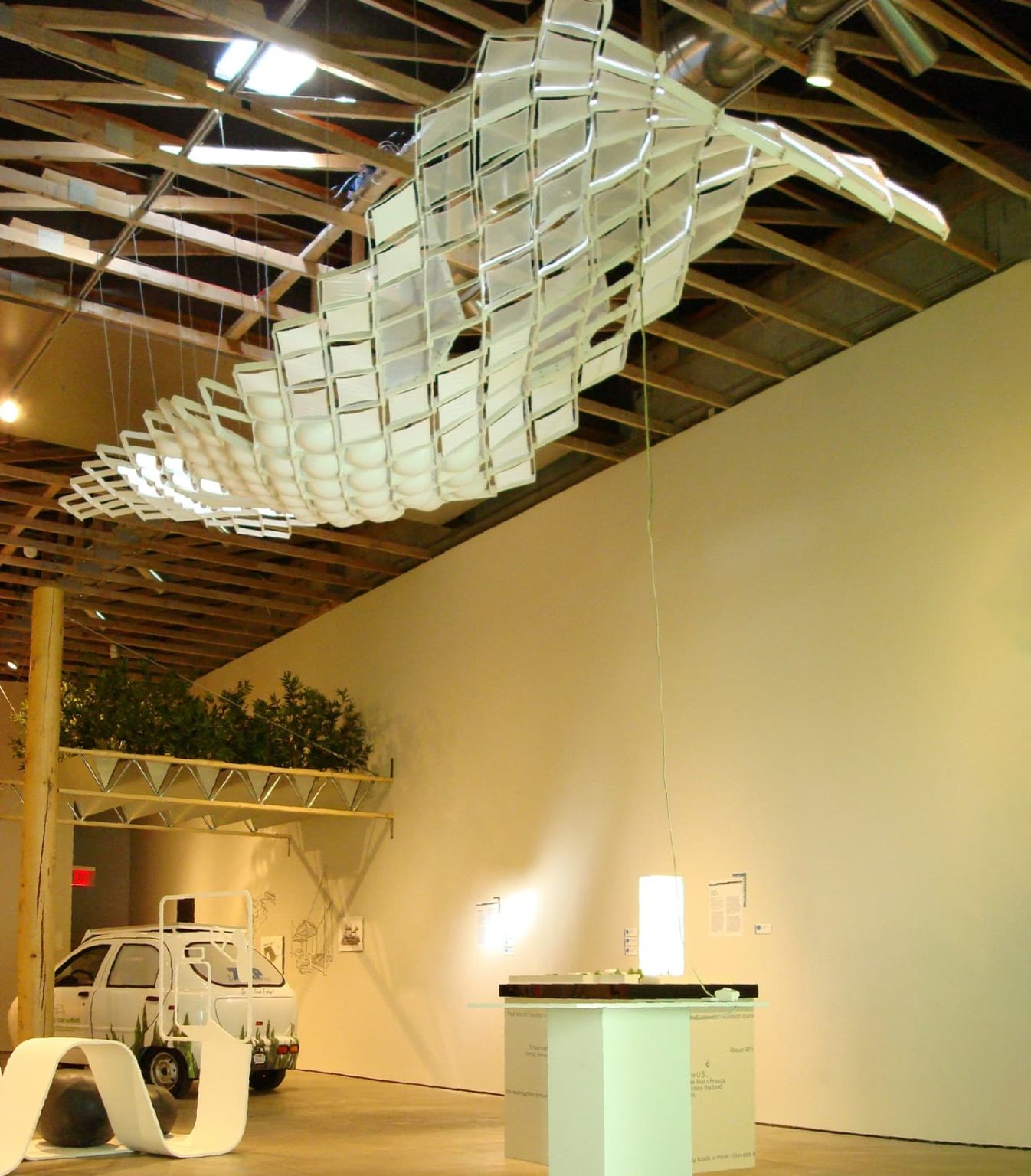
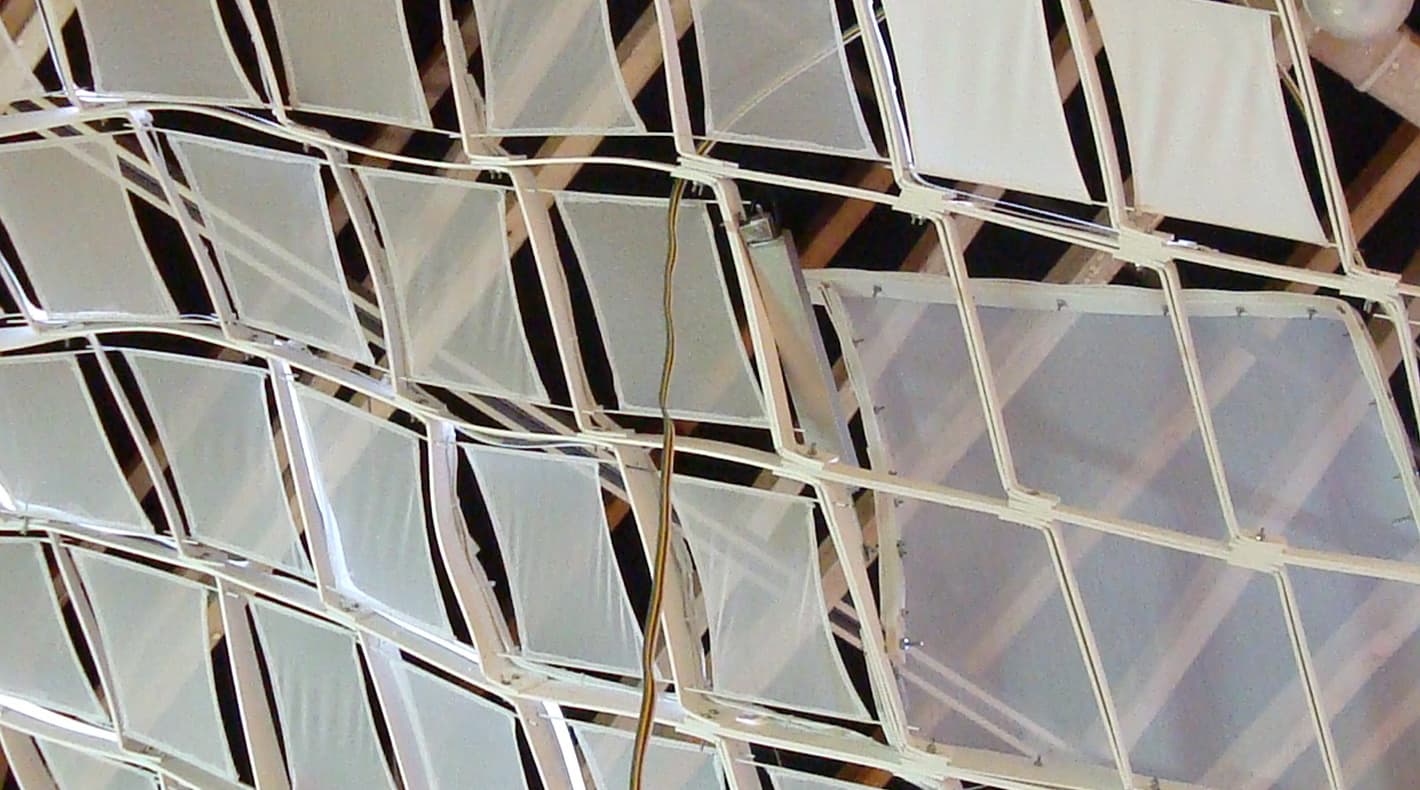
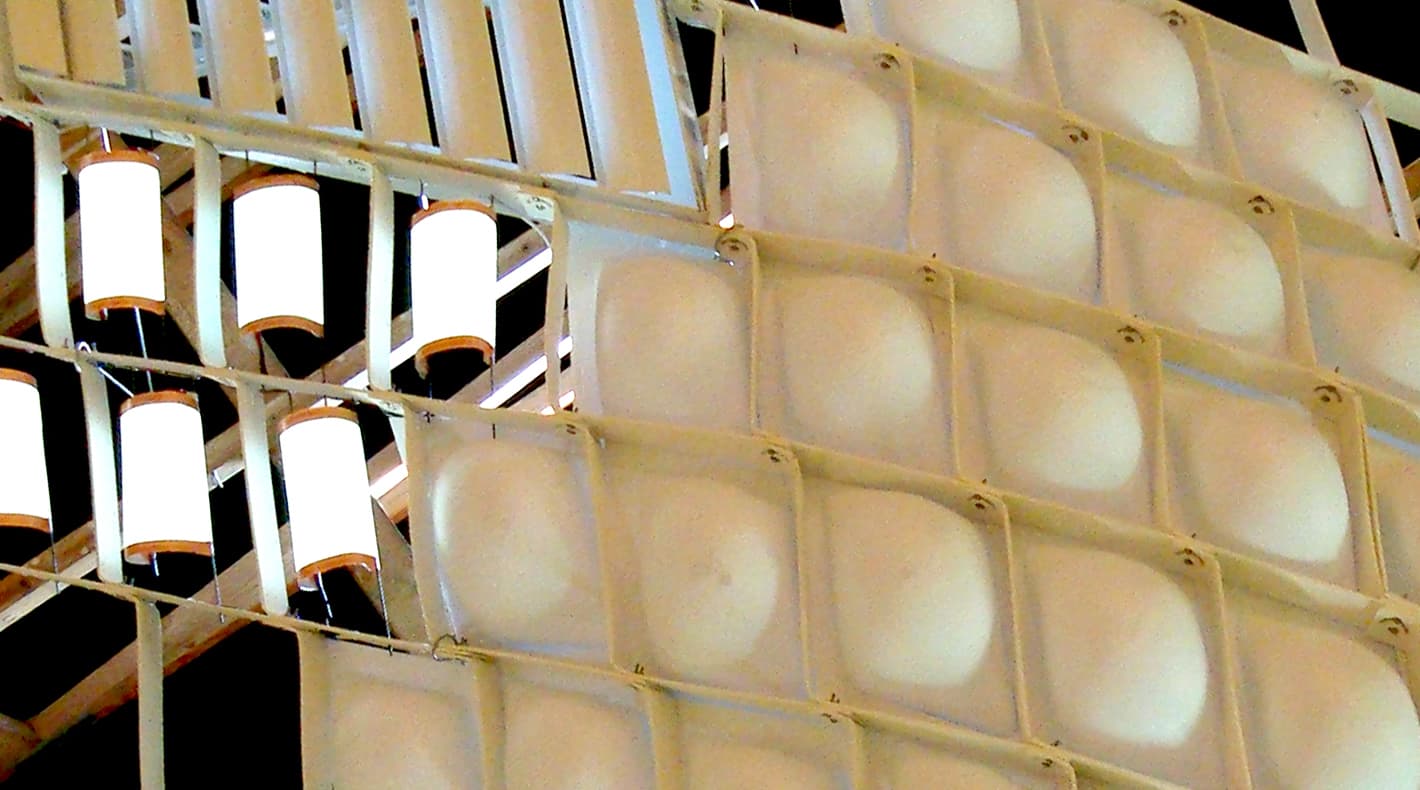
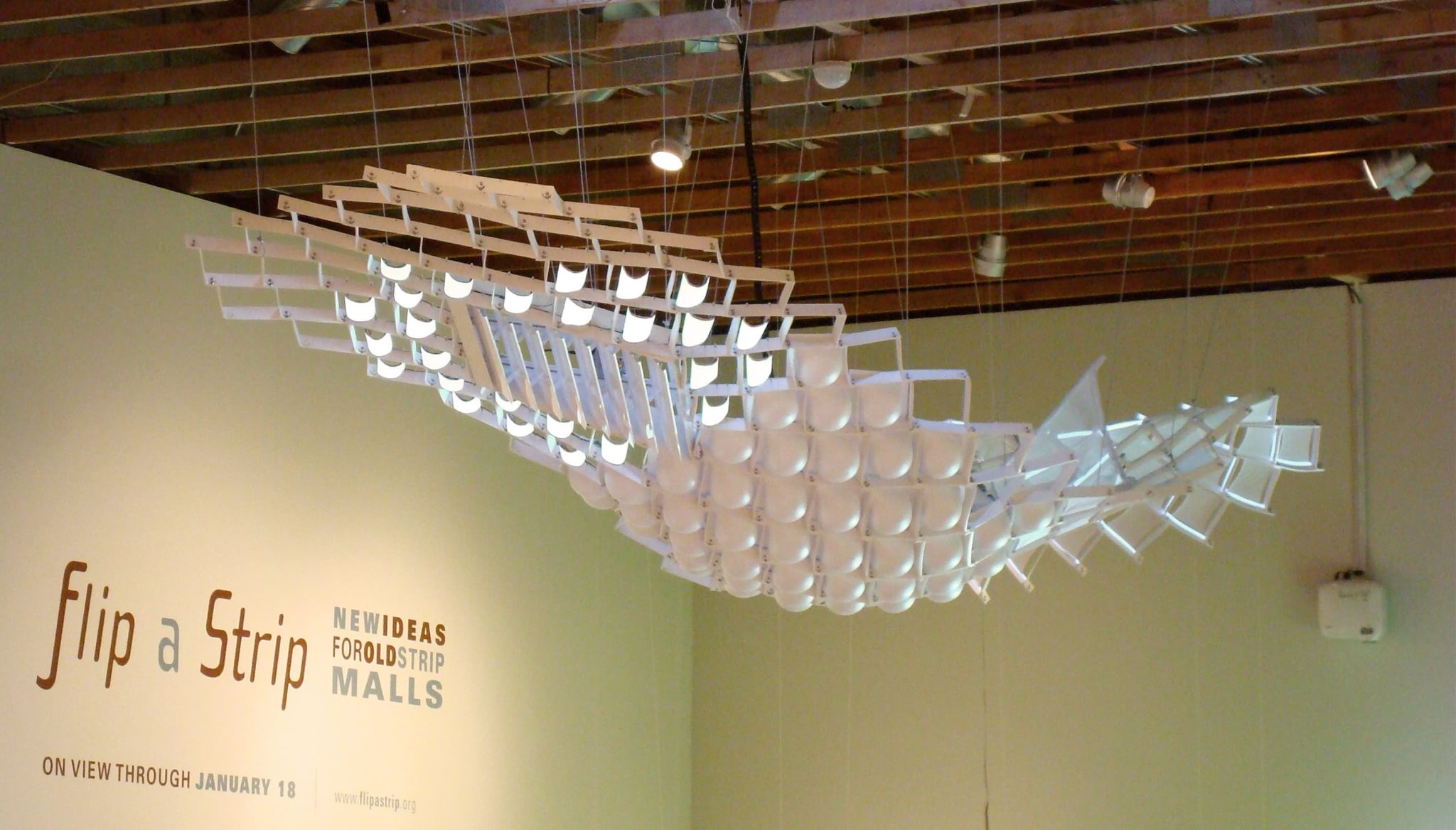
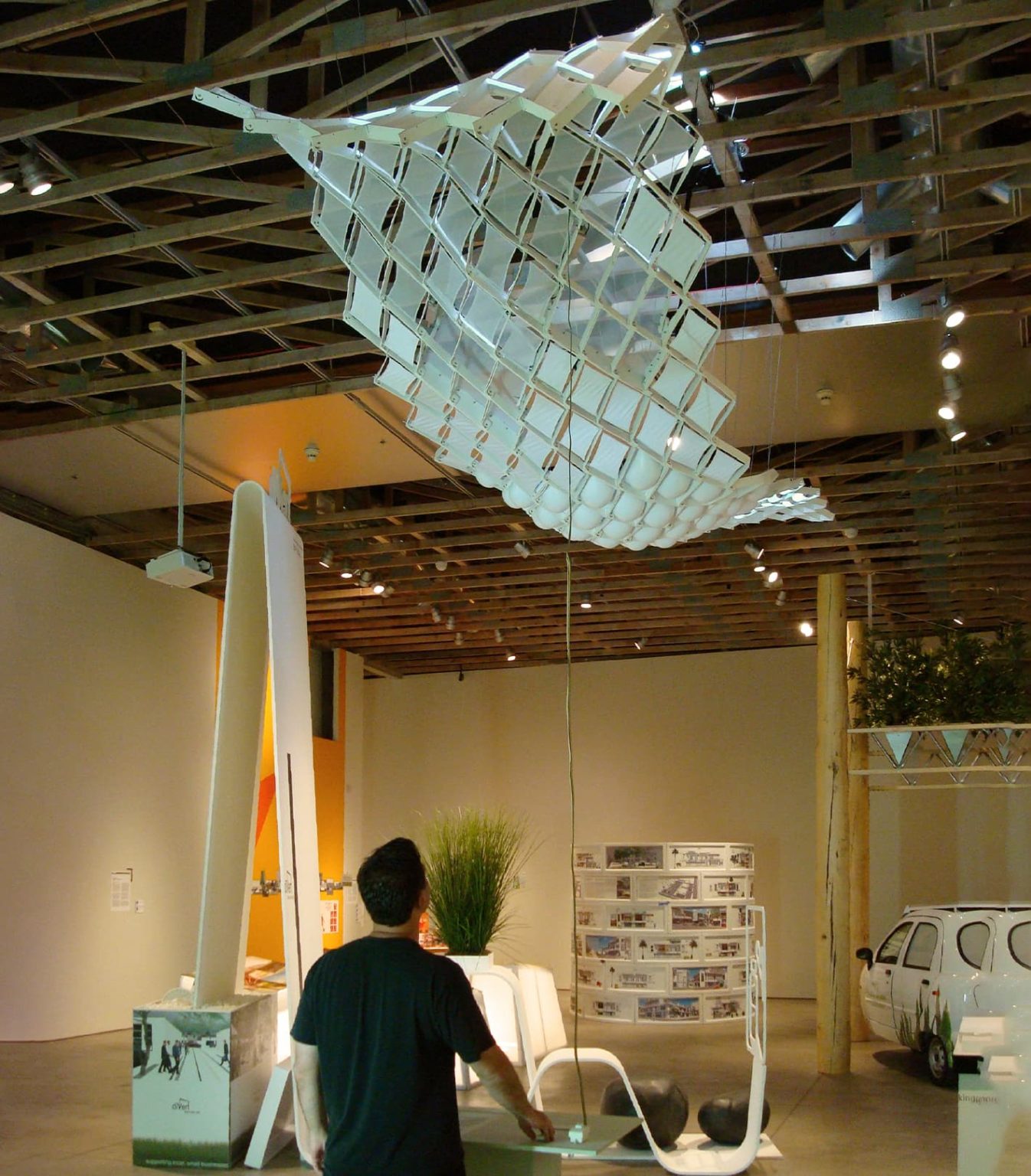
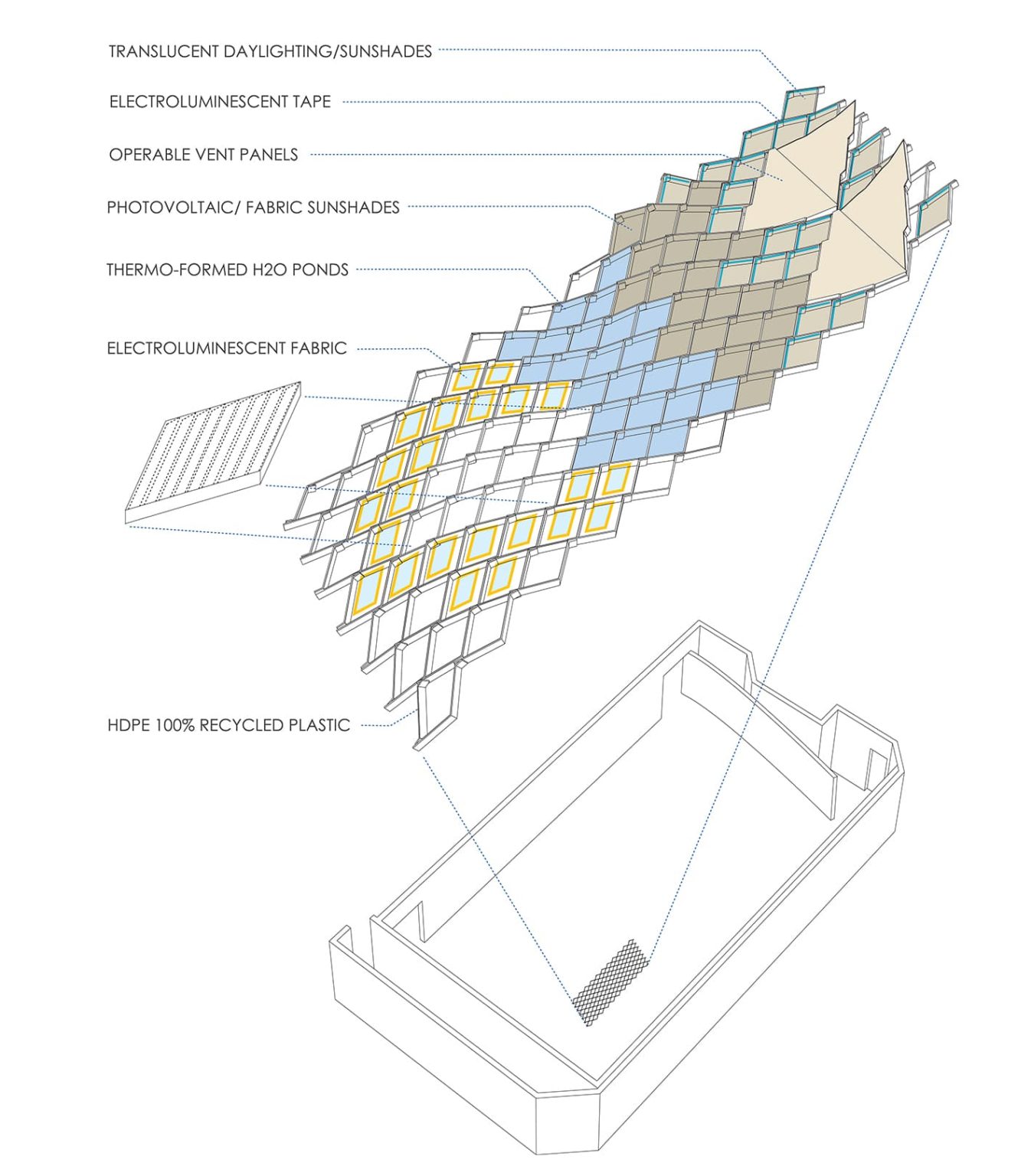
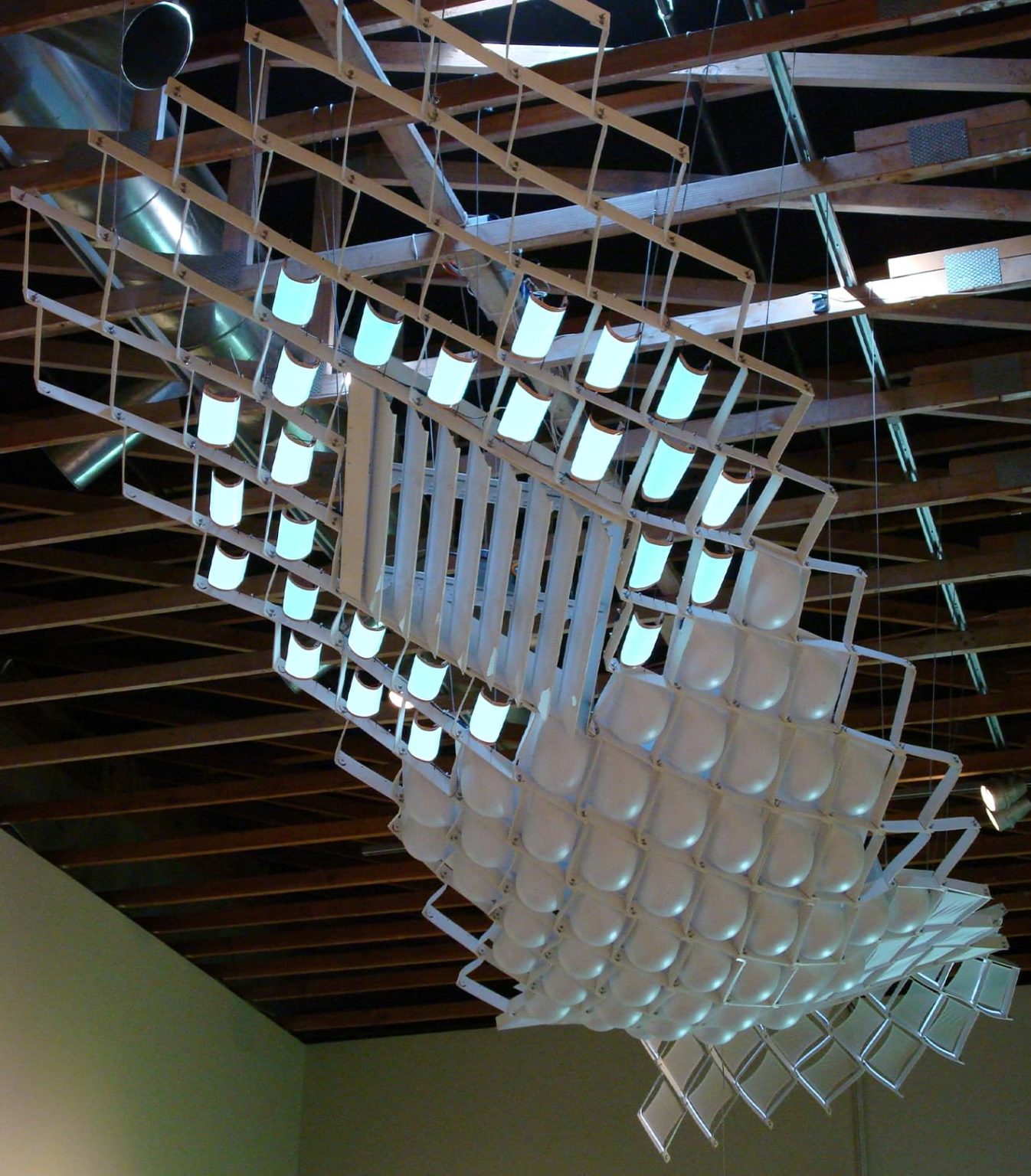
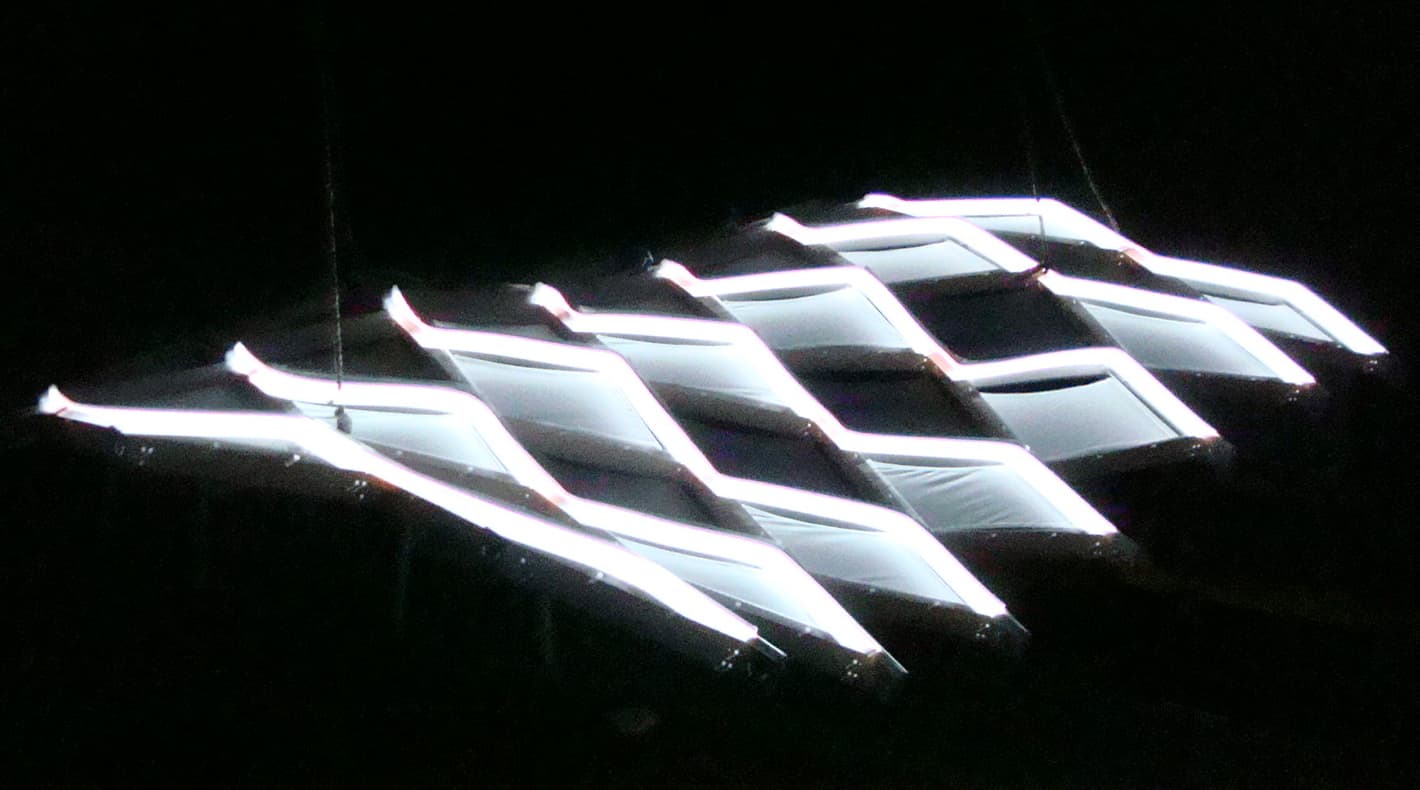
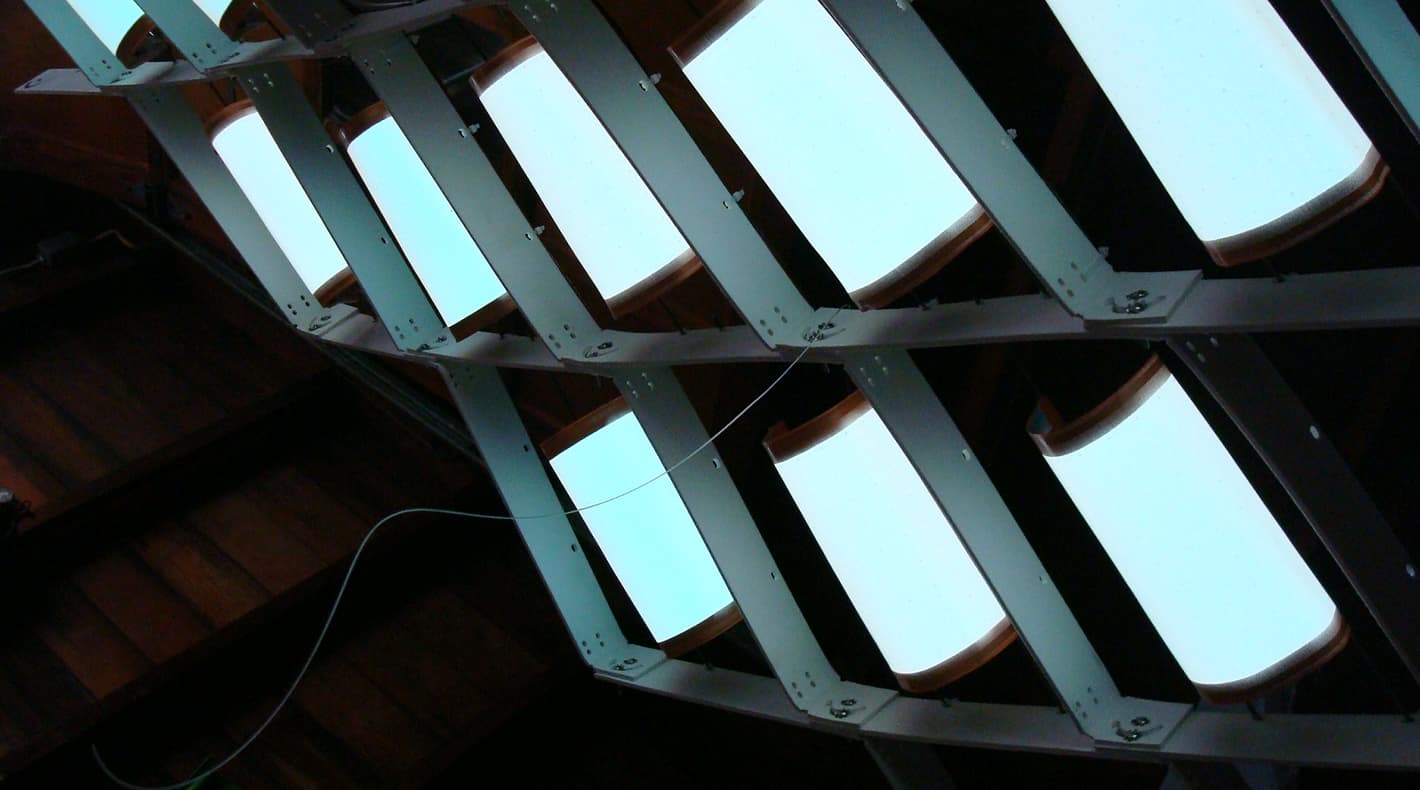
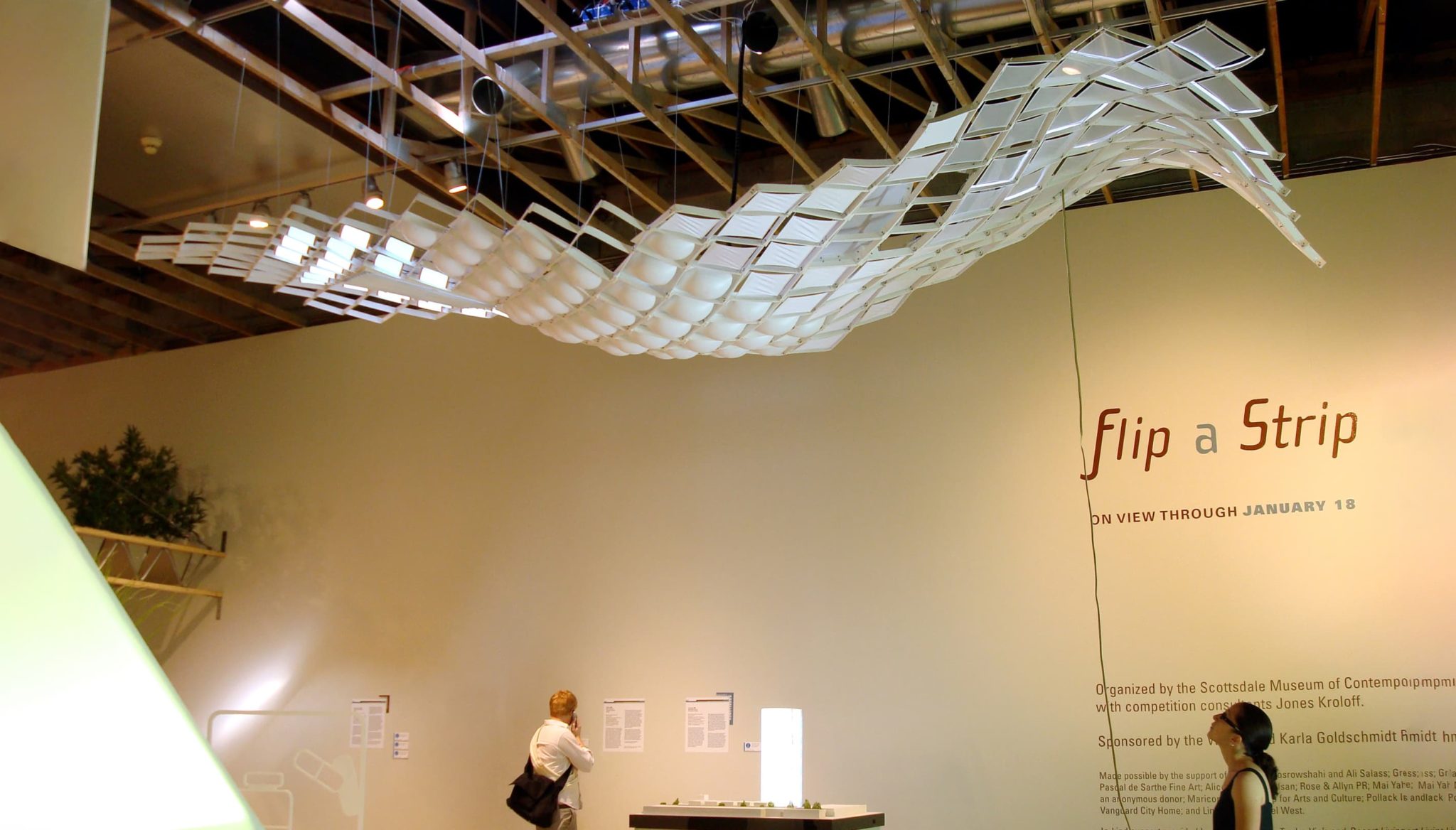
About the Installation
AT THE SCOTTSDALE MUSEUM OF CONTEMPORARY ART
A finalist in the Flip A Strip Design Competition, this installation incorporated a range of sustainable and lightweight materials to create a canopy-style roof. The competition explored ways to make strip mall shopping plazas “economically viable, aesthetically interesting, and communally meaningful.” Studio Luz used the opportunity to design and construct a flexible yet beautiful roofing system that could be adapted to various outdoor and indoor sites. The framework was made from 100% recycled HDPE plastic milk jugs that were cut into strips, thermo-formed, and then bolted in a self-similar repeating pattern. The design was based on the lamella structure, or an interlocking diamond pattern. This system allowed for the input of various technologies and shade creating devices. Fabric sunshades throughout the canopy were fitted with flexible photovoltaic panels. Although less efficient than rigid panels, their incorporation could generate electrical power for the building, be stored in batteries, or sold back to the electric company to help feed the overall grid. This particular rendition also featured opaque and translucent shading scrims, operable vent panels to direct airflow, electroluminescent plastic tape, and a newly developed electroluminescent fabric which creates a flexible and beautiful light source. At the time, the concept of electroluminescent film printed on fabric was being deployed for military tent structures in Afghanistan and Iraq.

